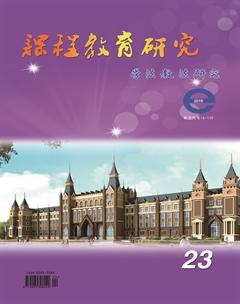Classroom Teaching Design of Military English Based on Production-oriented Approach
靳琼 黄春萌
【Abstract】“Production-oriented approach”,proposed by professor Wen Qiufang in recent years, is an effectiveforeign language teaching method. It can effectively solve the problem of the separation of theory and practice in college English education. The application of production-oriented approachinmilitary English classroom teaching will improve students language use and proficiency to achieve the goals of producing what theyve just learned and language output through classroom teaching demonstration including the “output motivating”,“inputenabling” and “assessing”.
【Key words】production-oriented approach; military English; classroom teaching
【中圖分类号】G642.421 【文献标识码】A
【文章编号】2095-3089(2019)23-0021-01
Introduction
Since the 21st century,our army has been carrying out diversified military missions. The officers and soldiers who will conduct operations must be able to communicate effectively, which puts forward higher requirements for our students. In order to meet the requirements of English reform in military academies and the needs of military English learners of different levels, military English classroom teachingmainly focuses on improving the students ability to listen and speak andtheir communication competence. Production-oriented approach, as an effectiveforeign language teaching method,emphasizes “learning-centered” andstrengthens language training in the classroom, attaching importance to the guidance of teachers. Teachers facilitate students learning by means of the output driven so that students will be hungry for the knowledge. Teachers provide authentic language communication situation and present specific language output requirements, then students complete practice of the language output in the process of trying to outputlanguageby selectively choosing specific language knowledge and materials provided by teachers under the guidance of teachers.
This paper applies production-oriented approach to college military English classroom teaching, combining the textbook Campaign English for the Military, to study the specific implementation methods of classroom teaching through adopting three procedures, including“output motivating”, “input enabling” and “assessing”.
一、Teaching philosophy
The teaching philosophy of production-oriented approach is the“learning-centered theory” that means all activities of classroom teaching should serve the production of effective learning. Teaching activities must be developedthrough achieving teaching objectives and enabling the effective learning. Production-oriented approach advocates “integration of learning and application”, that is, output as the purpose and selective learning and applying at the same time. It can effectively solve the problem of the separation of theory and practice in college English teaching. There are three core steps of the teaching idea of production-oriented approach: (1) output motivating; (2) inputenabling;(3)assessing. Production-oriented approachis adopted to design multi-level tasks in classroom teaching so that students can deepen their understanding of linguistic elementsand main knowledge in the process of practice, reflection and practice. Teachers provide appropriate scaffolding to encourage students to produce language and they pay more attention to the process of students output, which cultivate students independent learning ability and the ability to solve problems in real context.
二、Classroom Teaching Design of Military English Based on Production-oriented Approach
We are trying to conduct a research on classroom teaching design of military English based on production-oriented approach. The textbook we choose is Campaign English for the Military. It is a basic coursefor training military English language skills, especially listening and speaking, and introducing knowledgeof military English. This course mainly covers military training, military exercises, battlefield rescue, international peacekeeping, military leadership and command and other related topics.
1.Teaching objectives。
The course lasts 60 hours and is offered in two semesters respectively.After learning this course, students will be able to communicate effectively with allies, international partners or local people when to carry out military missions in the future.The overall goal is to strengthen learners cognition and application of military listening texts of different styles and genres by imitating or replacing listening materials; to help students to have the ability to apply and master the basic knowledge ofmilitary English by simulating real combat scenarios, role playing and designing various oral practice activitiesaccording to the different needs of military missions; to cultivate students intercultural communicationcompetence, critical thinking ability and self-learning ability; to broadenstudents international visionso that they can meet the needs of the career development and foreign military contacts.
2.Teaching design。
In term of teaching design, some of the key words in teaching we have chosen are selected from a domain-specific corpus according to frequency of the word, word density and word collocation to ensure students can fully grasp the core and basic knowledgeof military English. We focus on the integration with international organizations, like the UN, NATO, etc.., to guarantee that students can conduct various joint operations and expand exchanges with foreign militaries effectively. We also play students in different scenarios in the military field, which enable students to carry out experiential learning. Being emerged inthese real simulated scenarios, students will be able to form the wayofmilitarythinking.
In term of assessment, the total scores of students mainly include formative and summative assessment, each of which accounts for 50%.
3. Introduction of teaching procedures。

